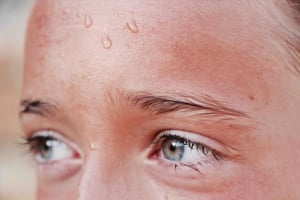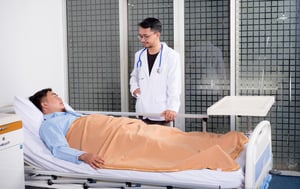Similar to legal malpractice suits, uncovered medi...
Last summer, we saw temperature records shattered throughout the nation. In fact, in some areas of California, temperatures spiked to 118 degrees. And, this year, we’ve already seen the type of summer we’re in for: muggy, hot afternoons that leave us breathless and wondering if we could really fry an egg on the pavement.
Over Memorial Day weekend alone, as we hit the pool and fired up the barbecue, an extreme heat wave overtook the Southeastern United States, and temperatures soared to record-breaking triple-digit highs — leaving all of us wondering how we’re going to handle the brutal heat over the next few months.
When temperatures reach such staggering triple-digit highs, heat-related illnesses surge. If you and your employees are working in the summer heat, you need to understand the dangers of heat-related illnesses and how best to protect your employees.
As an employer, it is your obligation to protect your workers from the dangers of the job they’re performing. This is a benefit not only to you because you keep your most important asset—your employees—safe, but you’ll also enjoy lower workers’ comp premiums in the absence of claims.
 This summer, you should expect to see extreme temperature hikes. And if you and your employees work outdoors, then you’re in danger of suffering from a heat-related illness. The dangers are real and severe. As you and your employees work this summer, understand the following heat-related illnesses than can arise:
This summer, you should expect to see extreme temperature hikes. And if you and your employees work outdoors, then you’re in danger of suffering from a heat-related illness. The dangers are real and severe. As you and your employees work this summer, understand the following heat-related illnesses than can arise:
Heat-related illnesses, which range from the extreme of heat stroke to more minor issues like heat rash, will keep your employees from performing at their best. Because of the dangers, to protect your employees—and to protect your company—we strongly recommend that you develop a comprehensive Heat Stress Prevention Program.
A Heat Stress Prevention Program can help you and your employees avoid heat-related illnesses this summer. In your Heat Stress Prevention Program, you must keep two key tenets in mind: avoiding heat-related illnesses in the first instance, and what to do if you or an employee does succumb to the heat.
Although the temperatures are rising, there are simple steps that your company can implement to keep employees safe. Keep the following in mind:
 Drink fluids: Provide employees working outdoors with plenty of water and other non-alcoholic fluids. Staying hydrating allows the body to sweat and naturally regulate body temperature.
Drink fluids: Provide employees working outdoors with plenty of water and other non-alcoholic fluids. Staying hydrating allows the body to sweat and naturally regulate body temperature. If someone at your company believes that they or a co-worker is suffering from a heat-related illness, the next step is to properly treat that illness. Please remember that If you or an employee is ever having a severe heat-related reaction, then you should seek immediate medical attention.
If someone at your company believes that they or a co-worker is suffering from a heat-related illness, the next step is to properly treat that illness. Please remember that If you or an employee is ever having a severe heat-related reaction, then you should seek immediate medical attention.
As you create your Heat Stress Prevention Program, keep these tips in mind to keep you and your employees safe.
We know that temperatures are on the rise, and heat-related illnesses are only going to become more prevalent this summer. To protect your employees and your company, be sure that you have adequate workers’ compensation. We understand that workers’ compensation coverage can be confusing to navigate. If you have questions about your coverage, or are looking to enroll in a policy, speak with one of our knowledgeable agents today.
Similar to legal malpractice suits, uncovered medi...
You get all the benefits and advantages of being a...
Natural disasters and crimes can impact a business...
Leap | Carpenter | Kemps Insurance Agency provides Commercial Business Insurance, Employee Benefits, Life and Health Insurance, and Personal Insurance to all of California, including Merced, Atwater, Los Banos, Mariposa, Madera, Fresno, Modesto, Turlock, and Stockton.
CA License Number 0646081 | Licensed to do business in California, Arizona, Hawaii, Idaho, Montana, Nevada, North Carolina, Oklahoma, Oregon, Virginia, West Virginia and Washington.
© Copyright 2023 Leap | Carpenter | Kemps Insurance Agency — Privacy Policy | Terms & Conditions.
Merced Office
3187 Collins Drive
Merced, CA 95348
Phone: (209) 384-0727
Additional Contacts
Toll Free: (800) 221-0864
Fax: (209) 384-0401